A crackling fire beneath a protective roof turns any garden structure into a four-season retreat, and a gazebo outfitted with a fireplace delivers that magic in twenty surprisingly different ways. Whether you’re dreaming of a rustic timber frame, a sleek steel pavilion, or a glass-walled hideaway, the ideas below show how thoughtful materials, safe clearances, and clever layouts can stretch outdoor living well into winter. From compact DIY kits to luxury sunken conversation pits, each concept spotlights one big benefit—extra warmth—while layering in ambiance, value, and year-round versatility. Ready to feel the glow? Let’s explore twenty fireplace-powered gazebo inspirations that can spark your next project.
1. Stone Hearth Gazebo as a Garden Anchor
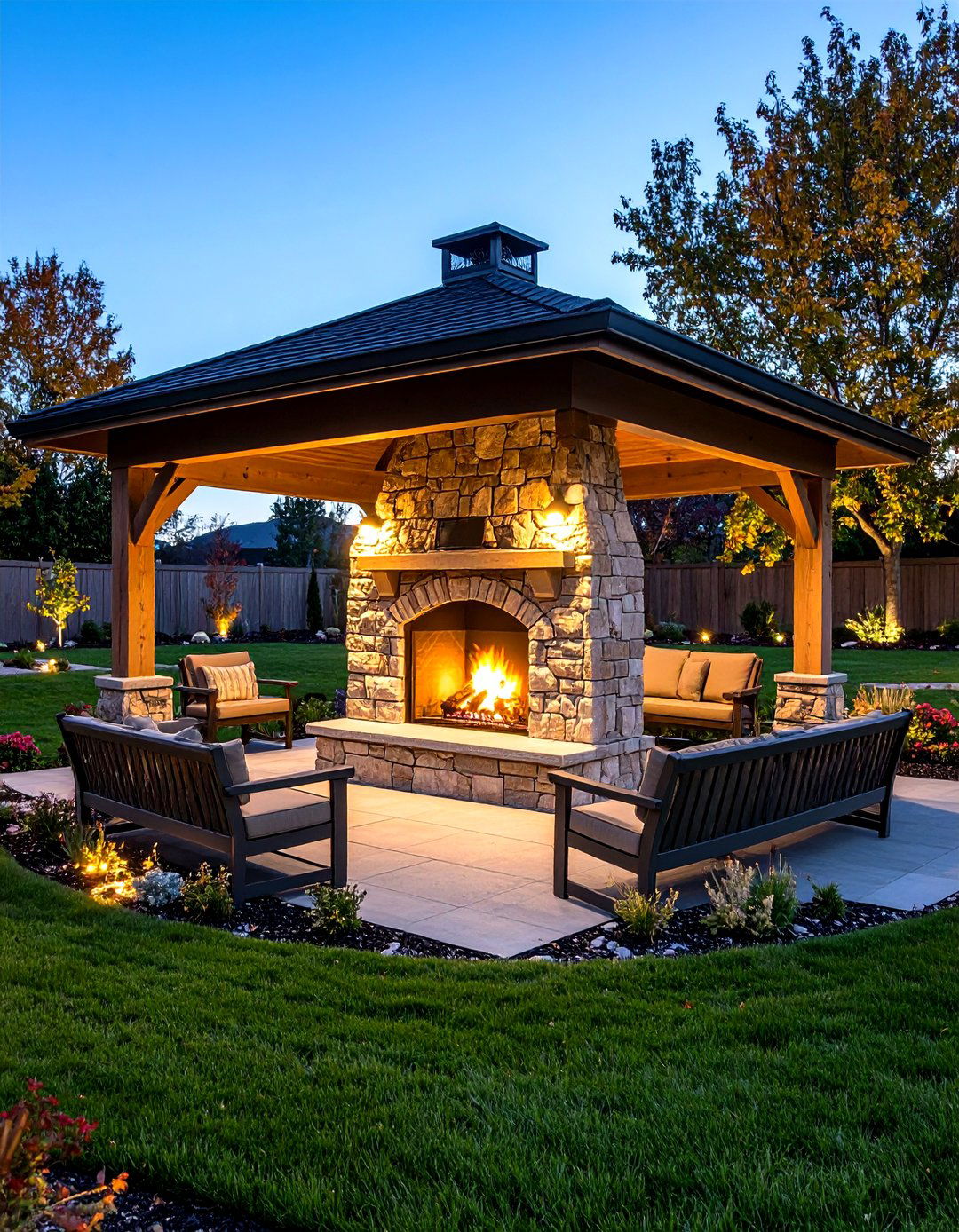
A solid-stone fireplace instantly turns a gazebo into the visual and social heart of the backyard. Start with a reinforced concrete pad to handle the chimney’s weight and prevent slab cracking. Position the structure at least 10 feet from property lines or buildings to meet common setback rules and protect surrounding foliage. Stone’s thermal mass stores heat, so guests stay warm long after flames die down, and natural masonry pairs effortlessly with plantings, making the gazebo feel rooted in the landscape. Add a wrap-around hearth that doubles as bench seating, then tuck low-voltage uplights into joints to make the rough-hewn textures glow after dusk.
2. Rustic Timber-Frame Gazebo With Crackling Wood Burner

The scent of cedar beams and burning logs evokes mountain-lodge comfort. Western red cedar resists decay and withstands harsh weather, making it a smart framing choice for a wood-burning fireplace gazebo. Keep the burner’s chimney at least two feet higher than anything within a ten-foot radius to improve draft and meet common code language. A hammered-copper chimney cap wards off sparks, while integrated log storage beneath the mantel keeps fuel dry and close at hand. Finish the rafters with tongue-and-groove pine for acoustic warmth, and string vintage-style Edison bulbs between trusses for a soft alpine glow on cool evenings.
3. Modern Steel Gazebo Housing a Linear Gas Fire
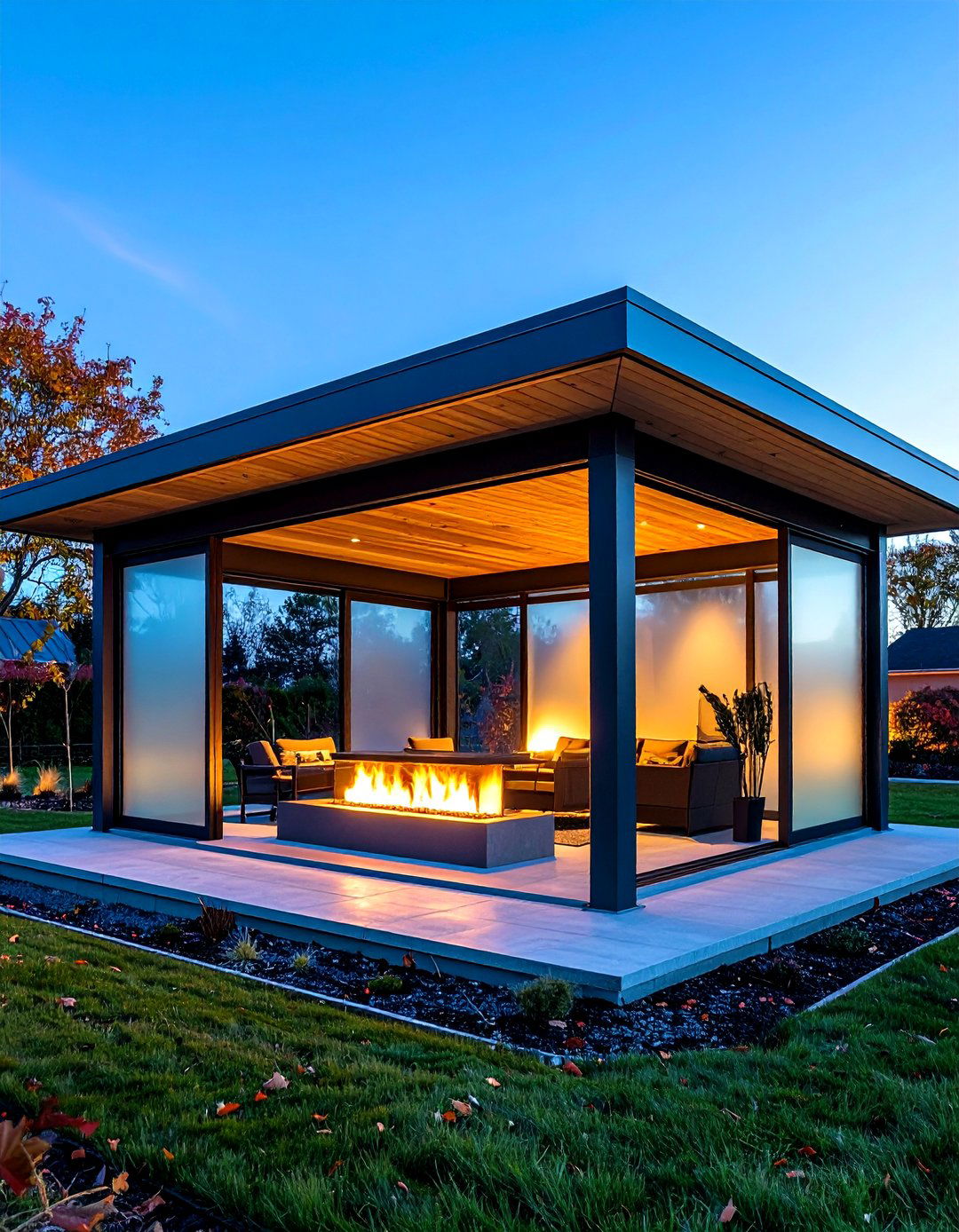
Sleek powder-coated posts, a flat roof, and a ribbon-style burner deliver contemporary drama without the mess of ashes. Linear gas fireplaces are designed for slender wall cavities and often vent straight through the roof, streamlining installation. Because gas produces fewer sparks, clearance can drop to around eight feet between flame and ceiling when the manufacturer allows. Pair the steel frame with frosted glass wind screens that mute breezes but still showcase the dancing flames. For effortless ambiance, connect the fire to a smart-home system so you can ignite the blaze from your phone just before guests arrive.
4. Coastal-Style Gazebo Featuring a Stucco Chimney
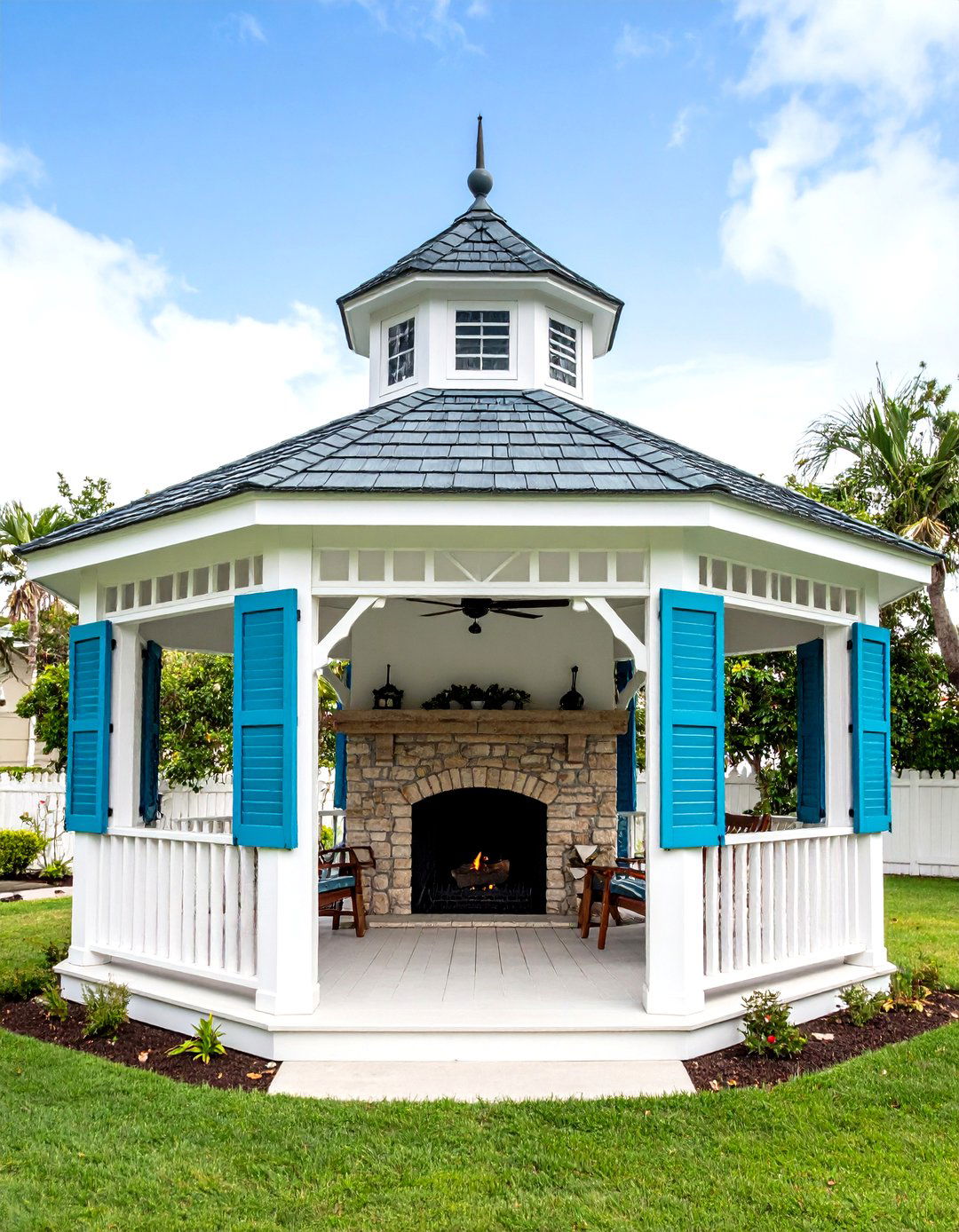
Sea breezes and salt air call for corrosion-resistant finishes. Stucco over concrete block shrugs off humidity and sand while echoing the look of seaside cottages. Top the chimney at least two feet above the highest point of the roof to ensure smoke clears the gazebo and surrounding deck. Nautical-blue shutters flanking the firebox hide storage for kindling, and a driftwood mantel pulls the palette together. Finish the ceiling underside with white beadboard to brighten the space and resist mildew. A pair of weatherproof ceiling fans help push warm air down on cooler shoulder-season nights.
5. Compact Backyard Gazebo With Fire-Pit Insert

Small yards often lack the footprint for a full chimney, so consider dropping a CSA-approved fire-pit insert into the center of a compact octagonal gazebo. Maintain at least eight feet of vertical clearance from flame to roof panels for safe ventilation. Opt for a propane unit with an adjustable flame so heat stays comfortable even on mild summer evenings. Built-in corner benches double as hidden tank storage, keeping the footprint tidy. Surround the pit with lava rock to diffuse heat and protect decking, and install mesh spark guards for added peace of mind when children or pets join the circle.
6. Octagonal Gazebo Boasting a Double-Sided Fireplace

One masonry core, two gathering zones: a double-sided fireplace lets guests enjoy flames from both inside the gazebo and out on the patio. Situate the chimney so the open sides align with prevailing breezes, improving draw and reducing smoke drift. For wood burners, most municipalities ask for 10- to 20-foot setbacks from trees and fences. Clad the firebox in split-face limestone to echo garden walls, and finish the patio side with a raised hearth that becomes overflow seating at parties. Exterior mantel brackets can hold lanterns or seasonal décor, creating year-round visual interest even when the fire is off.
7. Screened Gazebo Keeping Sparks Contained
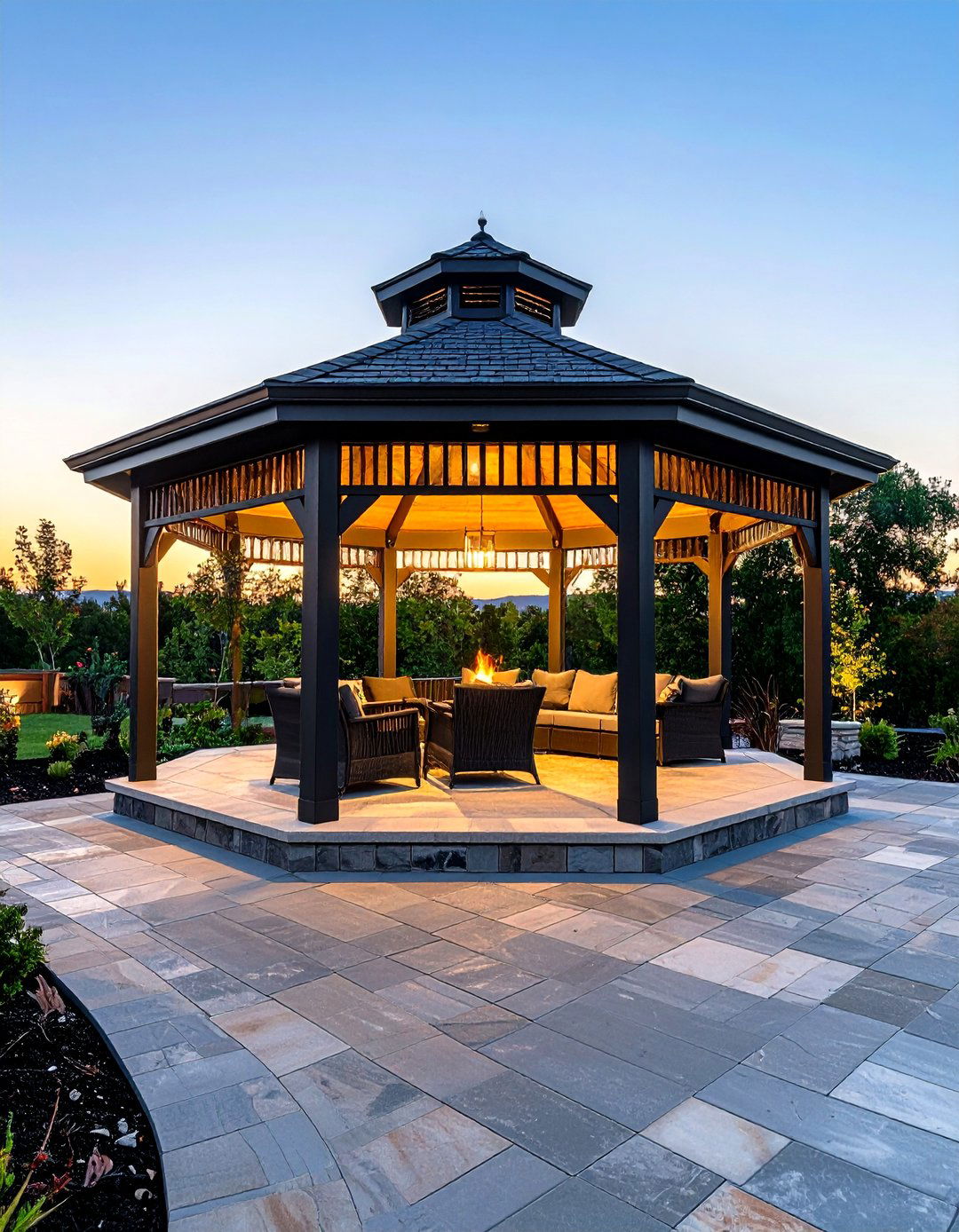
Biting bugs shouldn’t spoil late-summer s’mores. A fully screened gazebo pairs beautifully with a gas fireplace because there are no flying embers to snag mesh. Still, leave seven to ten feet between burner and ceiling to let heat dissipate. Choose fine stainless-steel screen panels that stand up to heat and resist corrosion. Add roll-down vinyl panels behind the mesh for shoulder-season wind protection, and mount a ceiling-hugging exhaust fan to help pull any lingering smoke upward. A slate-tiled floor shrugs off stray sparks and mud tracked in from the lawn.
8. Poolside Gazebo With Fireplace Lounge
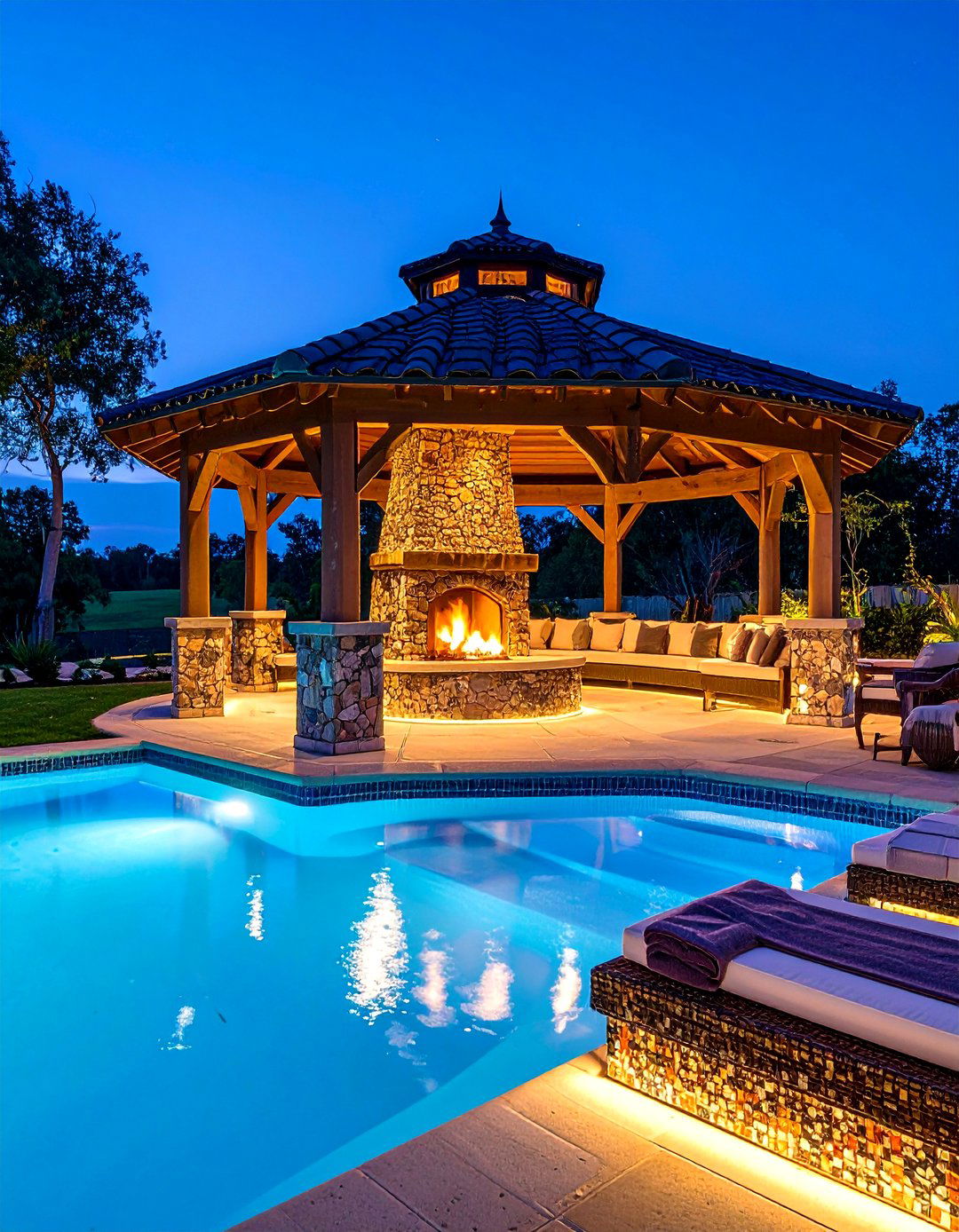
What elevates a swim-up bar? A nearby fireplace to banish post-dip chills. Place the gazebo at the shallow-end transition so guests can dry off on chaise lounges arranged around the hearth. Because pools already demand generous setbacks, verify clearances—most guides recommend at least ten feet between open flame and water features to prevent chlorine vapor ignition. Tile the firebox in the same mosaic used on the pool steps for a cohesive look, and run low-voltage LED strip lights under bench edges so wet swimmers see footing after dark. A built-in towel niche in the chimney keeps fluffy warmth within arm’s reach.
9. Garden Gazebo With Pizza-Oven Fireplace

Combine dinner and drama by incorporating a wood-fired pizza oven above the main firebox. The dual-purpose chimney must clear the roof peak by at least three feet for proper draft. A granite prep counter wrapping the gazebo’s inner perimeter creates a casual buffet line, while herb planters tucked between posts let cooks snip oregano seconds before topping pies. Install a stainless sink off to one side for quick clean-ups, and add retractable canvas side curtains to shield diners from evening breezes without trapping smoke.
10. Pergola-Gazebo Hybrid With Suspended Fire Bowl
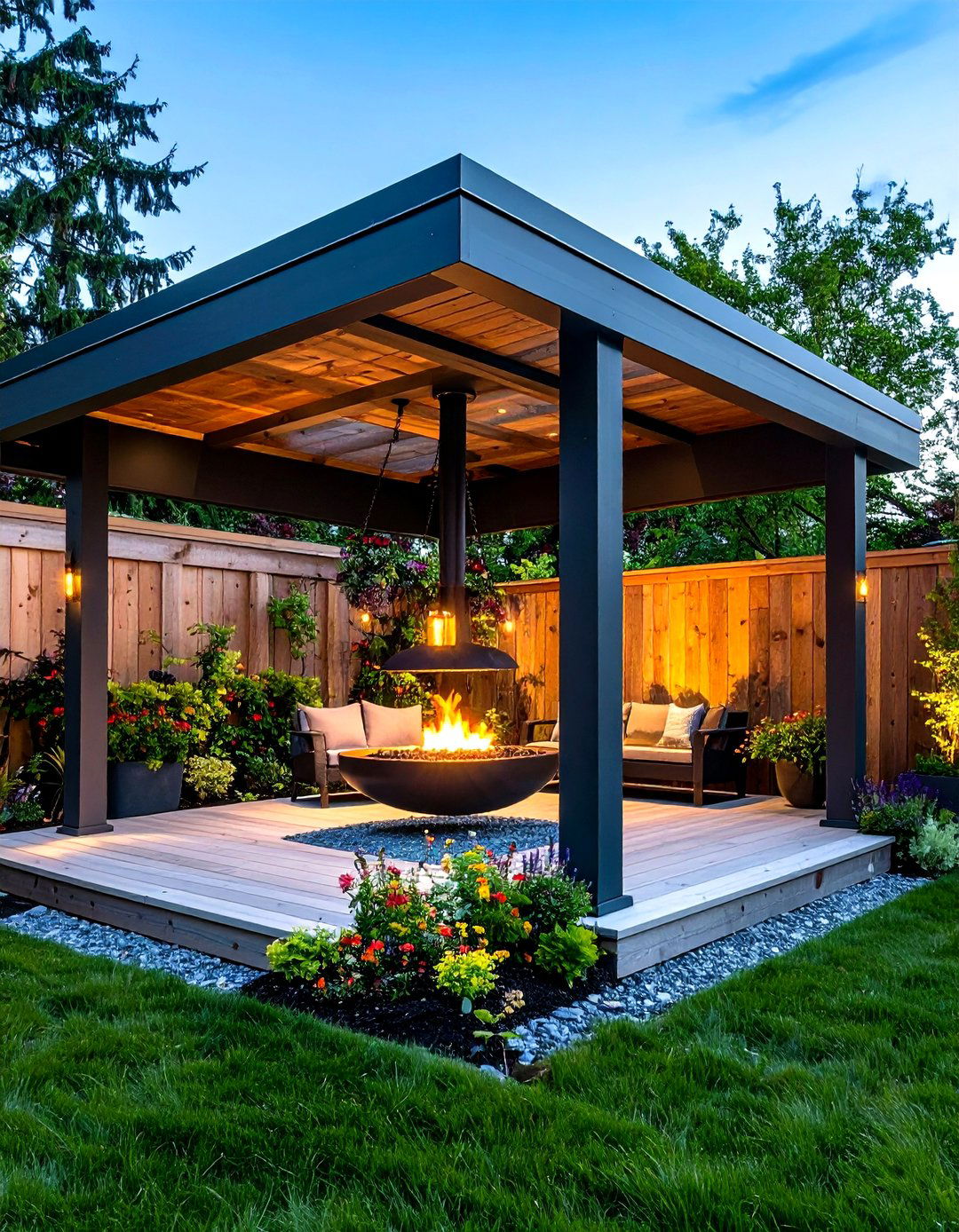
Open-air pergola rafters meet the solid back wall of a traditional gazebo, providing both starlight and wind protection around a hanging steel fire bowl. Because flames sit higher off the floor, ensure an eight-foot gap to any overhead lattice. A cantilevered beam and chain system lets you raise or lower the bowl for heat control, while built-in planters at each corner anchor the structure and absorb radiant warmth—ideal for tender vines like jasmine. Finish the back wall in reclaimed barn boards to accent the bowl’s industrial vibe.
11. Pavilion-Style Gazebo With Outdoor TV and Fireplace
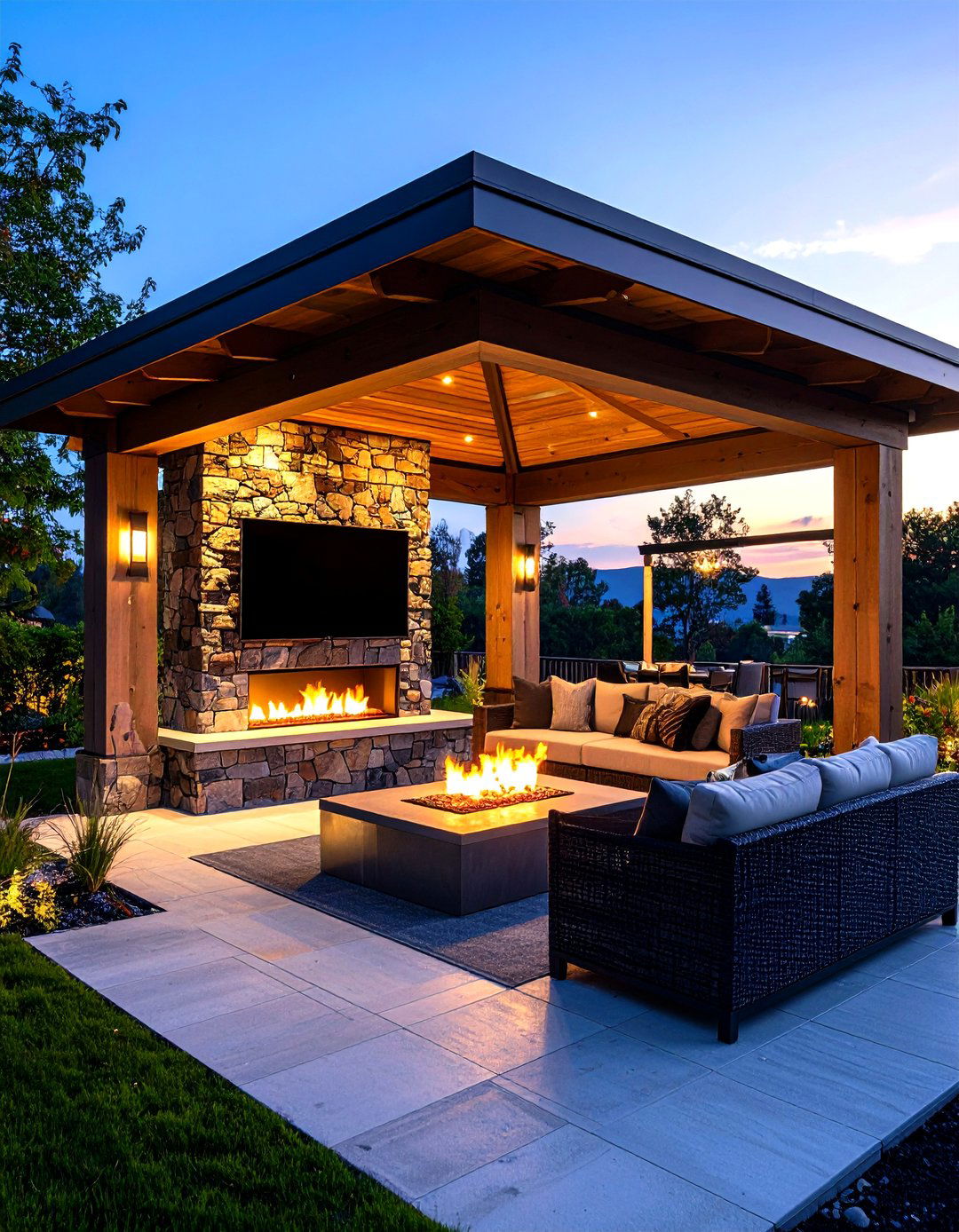
Movie night moves outdoors when a stone fireplace supports a weather-rated flat-screen. To avoid heat damage, keep the mantel at least 12 inches below the TV’s bottom edge and install a full-motion mount with tilt so glare from the flames doesn’t spoil the picture. Run HDMI and power through galvanized conduit hidden inside a chimney cavity for a clean look. Because electronics dislike smoke, gas inserts are preferable here; they offer controllable flames with minimal soot. Add directional ceiling speakers in the rafters for surround sound that stays clear even with crackling logs.
12. Glass-Walled Gazebo Extension With Corner Fireplace
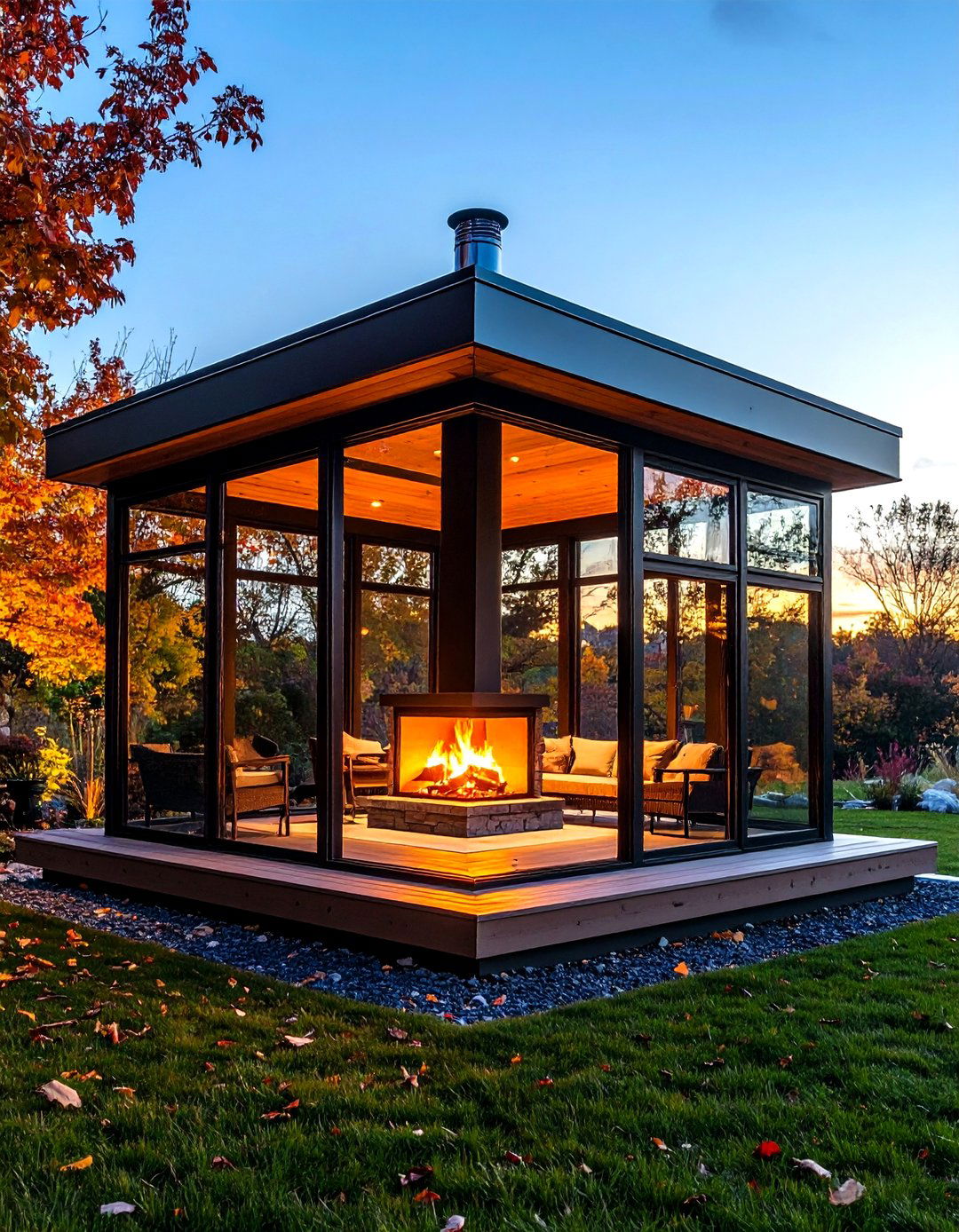
Attaching a glass-paneled gazebo to the house creates a light-filled sunroom that still feels outdoorsy. A corner fireplace saves floor space and directs heat diagonally across seating. For safety, set the firebox at least three feet from full-height glass to prevent cracking from thermal shock. Vent the unit through a dedicated stainless flue that exits the main roof rather than tying into existing chimneys, reducing back-draft risk. Use thermally broken aluminum frames to cut condensation, and specify low-E glazing to reflect radiant warmth back inside during winter breakfasts.
13. DIY Kit Gazebo With Prefab Fireplace Module
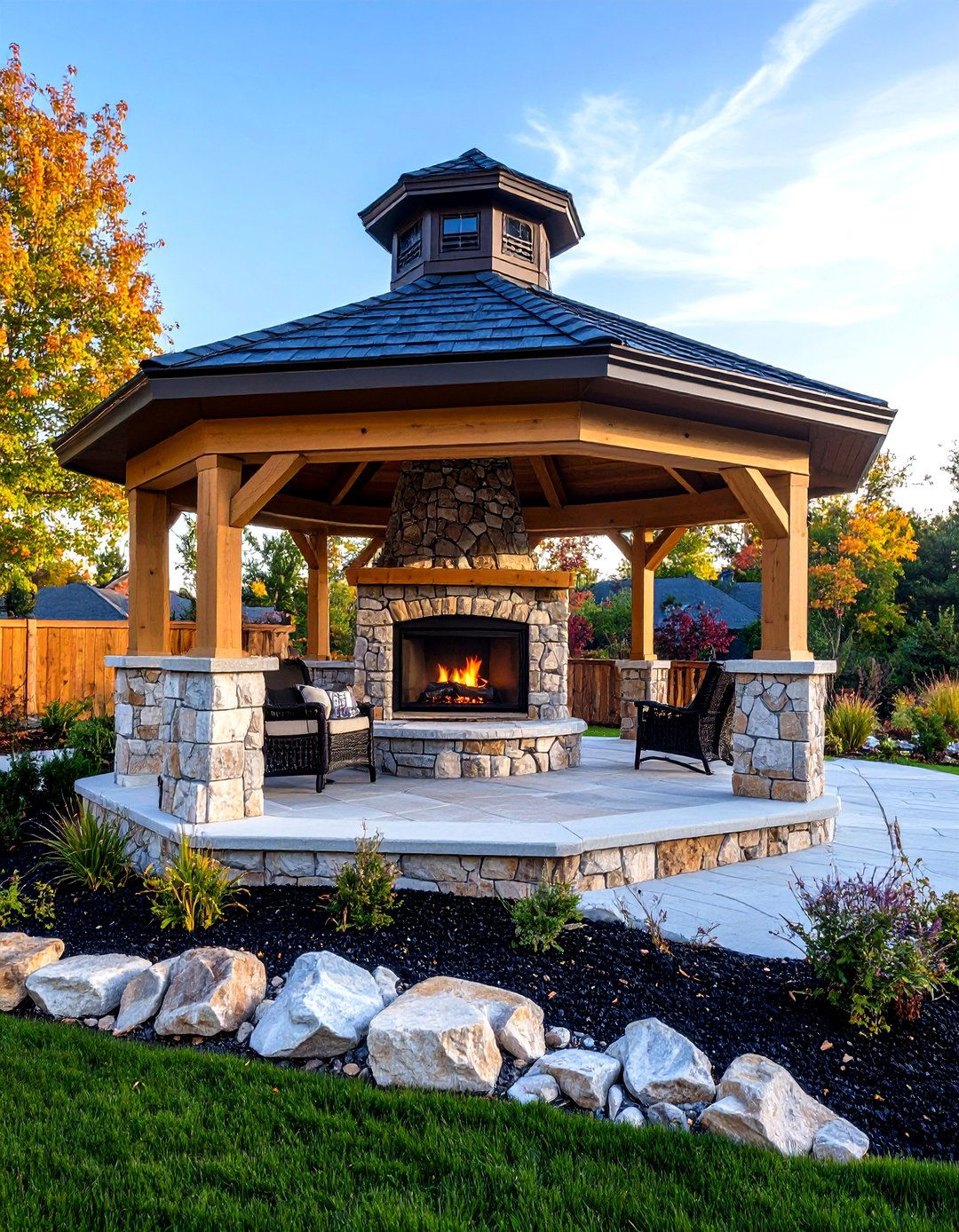
Home-center kits simplify both roof framing and masonry. Prefabricated fireplace shells bolt together atop a simple footing, trimming weeks off build time. Before ordering, confirm the gazebo’s post spacing matches the module’s width; most kits slot neatly between standard eight-foot bays. Because prefab units often weigh less than site-built stone, footings can be smaller—check the manufacturer’s chart for exact loads. Finish the shell with cultured-stone veneer and install a stainless gas log set for plug-and-play convenience. Even first-time DIYers can typically complete assembly over a long weekend with a helper and basic masonry tools.
14. Cedar Gazebo With Cast-Iron Wood Stove
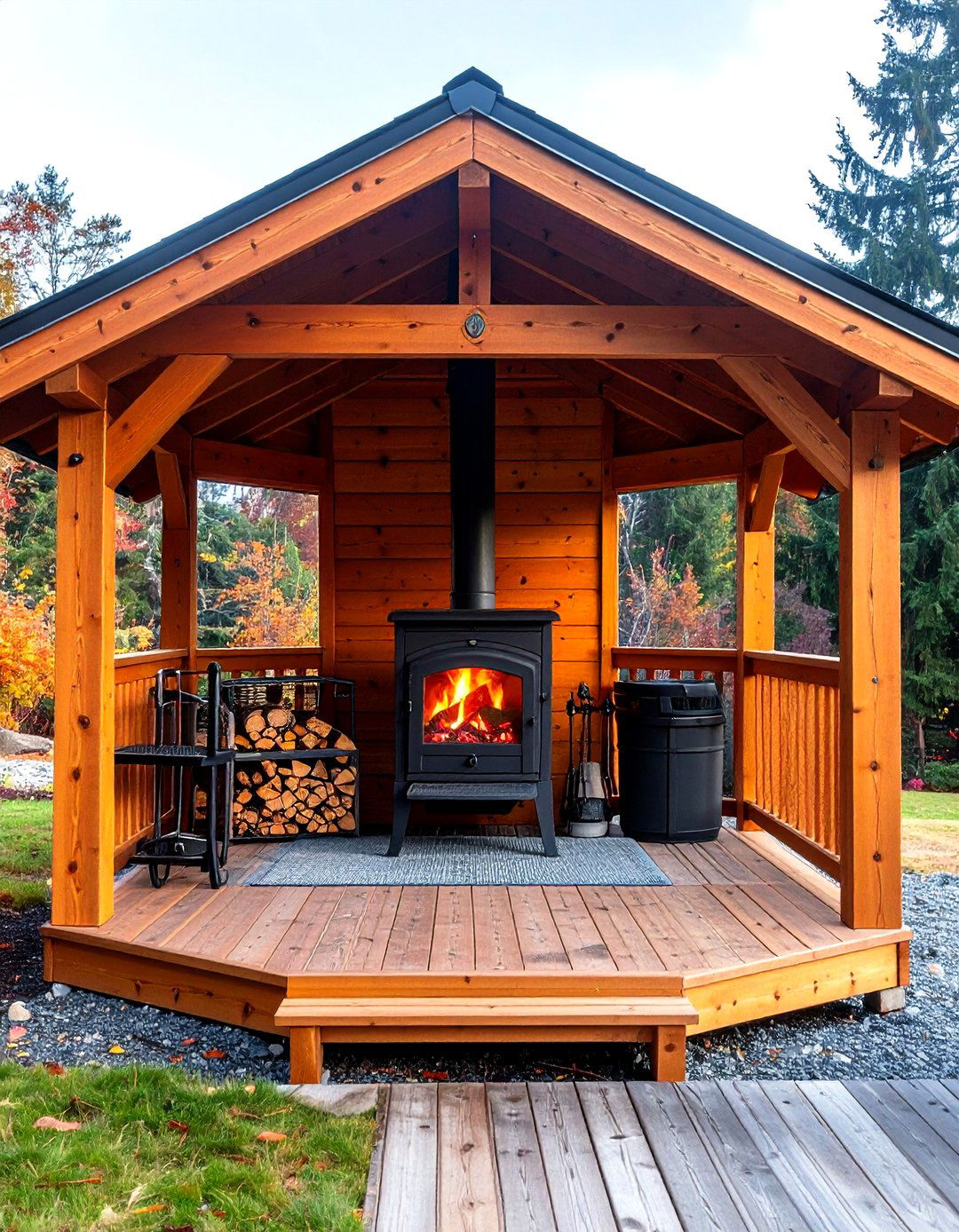
Unlike open fireplaces, a sealed cast-iron stove maximizes heat output and burns logs more efficiently. Vent the stove pipe straight through the gazebo roof, adding a double-wall insulated section where it passes the cedar boards to prevent charring. Cedar’s natural oils deter insects, so skip chemical treatments that might off-gas near flame. Because the stove sits on legs, lay a non-combustible hearth pad extending at least 18 inches on all sides. Hang drying racks from joists to create a mini-sauna vibe for damp coats and mittens after winter snowman sessions.
15. Contemporary Gazebo With Bioethanol Fireplace
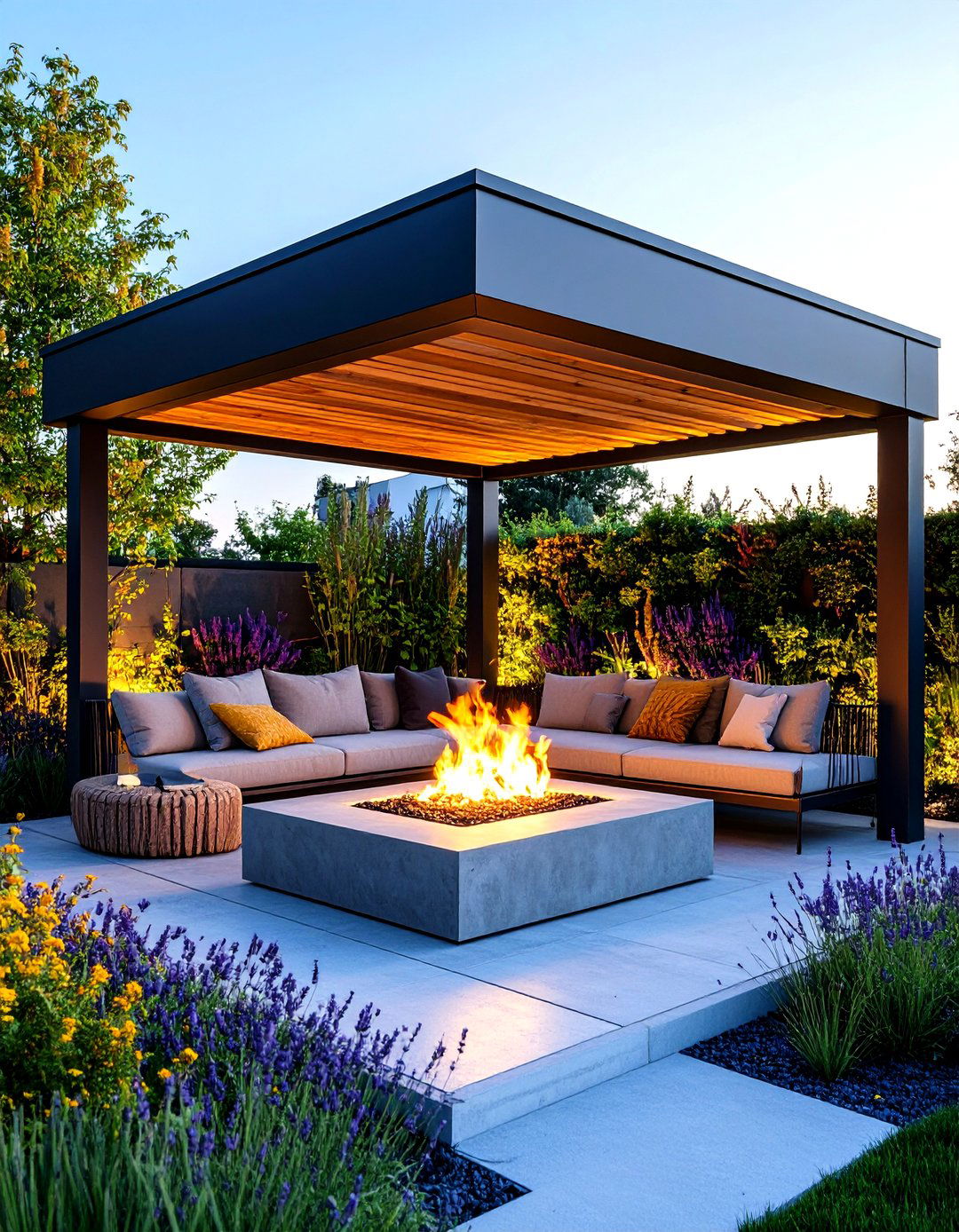
Bioethanol burners require no chimney, producing only water vapor and small amounts of CO₂, making them perfect for lightweight aluminum gazebos. Nonetheless, good ventilation matters: keep two opposing wall panels open or louvered whenever the flame is lit. Because burners sit flush with countertops, integrate one into a concrete coffee table at the gazebo’s center, freeing wall space for artwork or a vertical herb garden. The clean-burning fuel leaves no soot, so white fabrics and pale decking stay pristine. Store ethanol in a locked, ventilated cabinet to keep curious kids safe.
16. Multi-Season Gazebo With Infrared Heater and Faux Fireplace

If local ordinances restrict open flames, mimic the look with an LED-lit electric insert trimmed by stacked-stone veneer. Supplement visuals with ceiling-mounted infrared heaters that warm people, not air, letting the gazebo feel toasty even when wind whistles through slatted walls. Because electric units need only standard outlets, installation costs plummet compared with vented gas lines. Program the heaters to cycle on at dusk via smart plugs, ensuring energy isn’t wasted during daylight. Add insulating, clear vinyl curtains that roll down for winter yet disappear behind trim the rest of the year.
17. Wedding-Venue Gazebo With Dramatic Stone Hearth
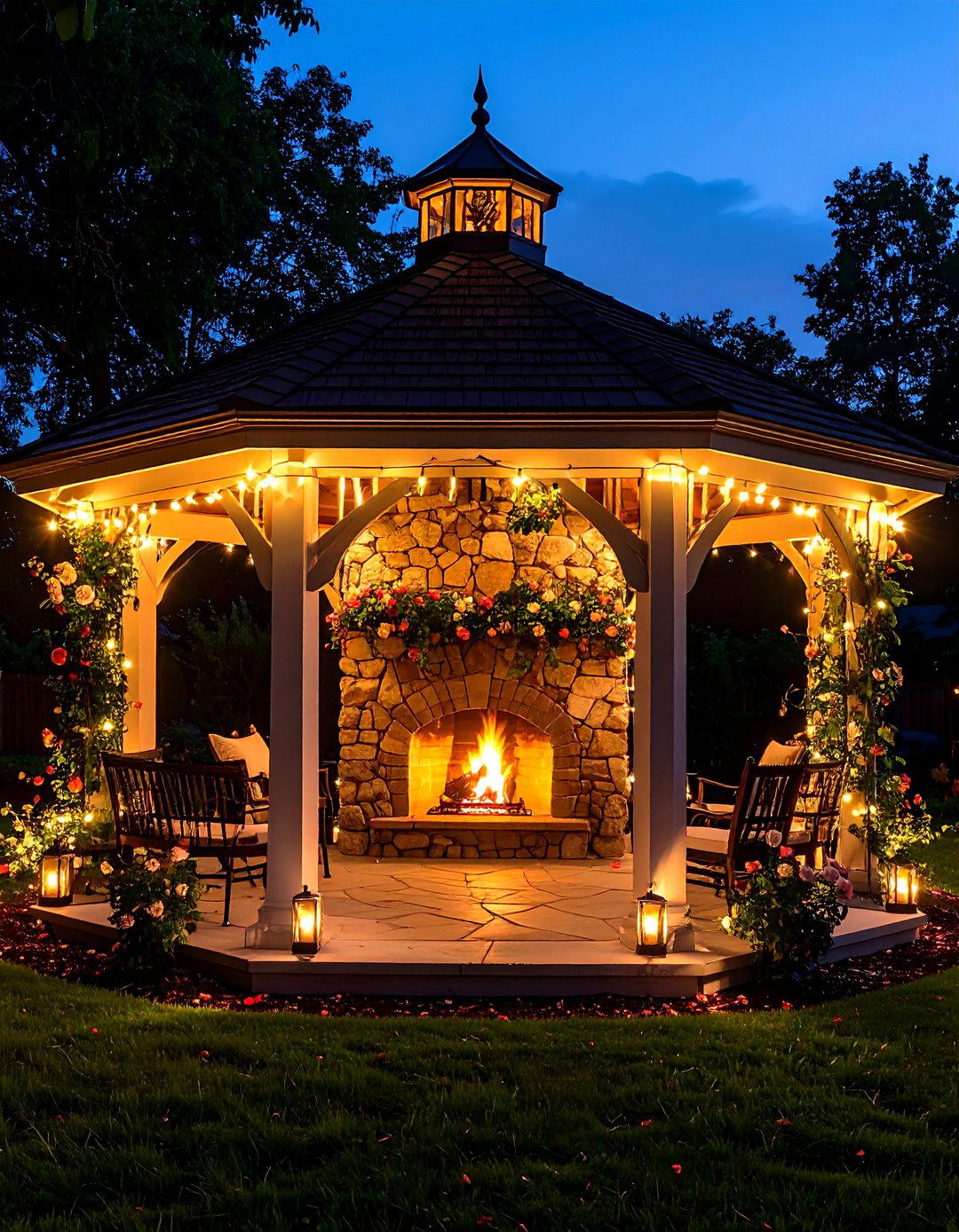
Event planners love a photo-ready focal point, and a grand fireplace framed by climbing roses delivers. For crowd safety, maintain a 15-foot roof height so smoke rises above photographers and delicate fabrics. Build shallow steps around the gazebo perimeter for seamless dress trains, and integrate low-profile gas burners to minimize ember risk near formalwear. The stone façade doubles as a backdrop for floral arches, while concealed LED uplights make evening ceremonies sparkle without relying on flash photography. Cap the chimney with an ornamental wrought-iron topper that echoes decorative railings elsewhere on-site.
18. Mountain-View Gazebo With Seating-Wall Fireplace
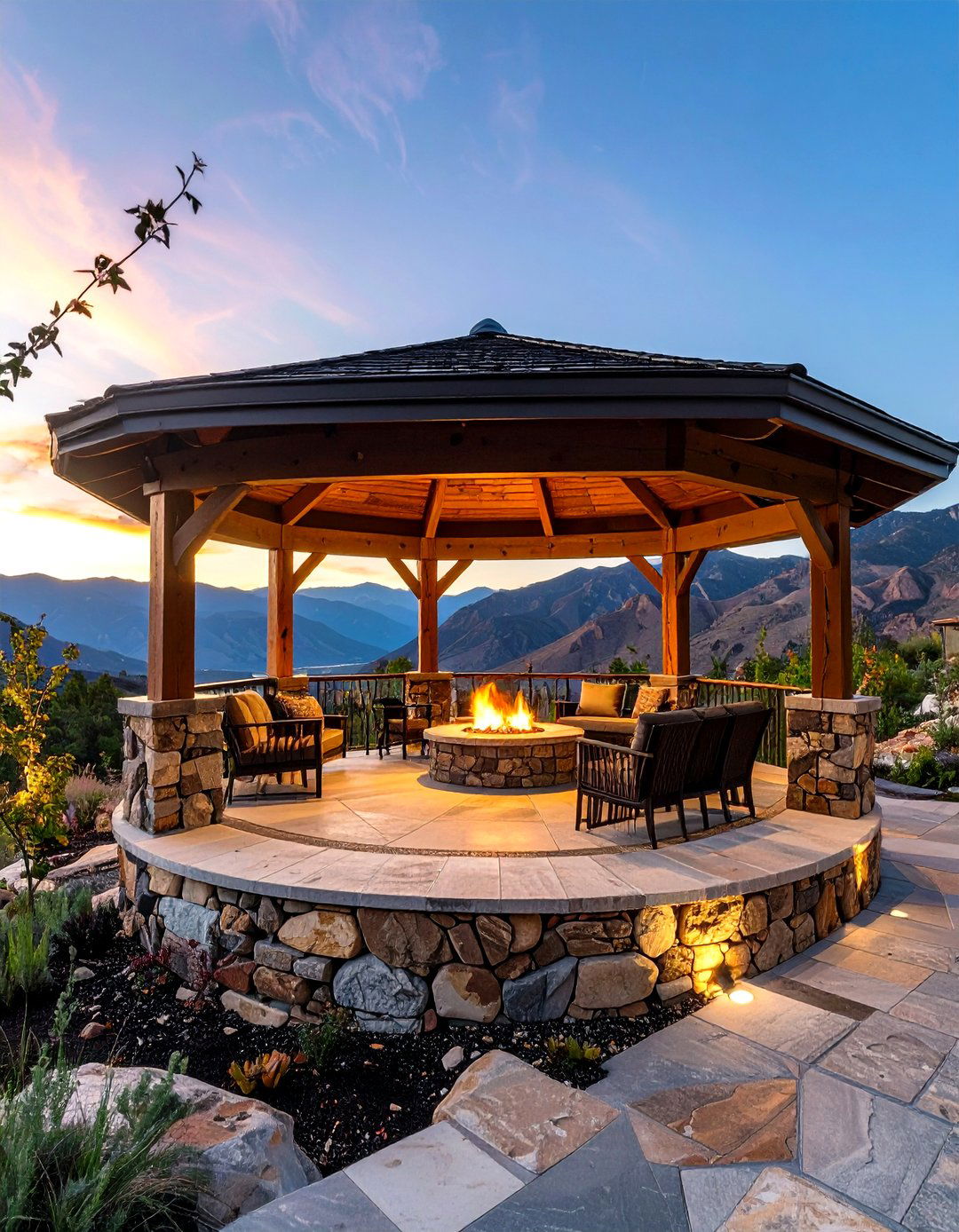
Perched on a slope, a gazebo can capture vistas by running a half-height stone seat wall from the firebox out toward the view. The masonry absorbs daytime sun, then radiates warmth back after sunset. Follow the rule of keeping the chimney opening at least 24 inches higher than anything within ten feet to maintain draw in thin mountain air. Anchor posts to helical piers for stability on uneven ground, and specify fire-rated glass wind guards atop the wall so flames stay lively when gusts roll down the valley.
19. Minimalist Metal Gazebo With Portable Fireplace Cart

A wheeled propane fire table lets renters or seasonal campers enjoy flames without permanent construction. Choose a cart certified for covered use and obey the general guideline of ten-foot clearance from walls and posts when in operation. Powder-coated aluminum framing resists rust yet remains light enough to disassemble and store off-season. Clip-in polyester side panels tame breezes but unzip in seconds if heat builds. Because portability invites flexibility, mark a few “parking spots” with paver pads so the fire table always rests on non-combustible surfaces.
20. Luxury Gazebo With Sunken Conversation Pit and Fire

For the ultimate lounge, recess the center floor six inches and ring it with plush bench cushions that sit below flame height, sheltering guests from wind. Install a wide gas burner at eye level so flames feel immersive yet safe. Confirm an eight-foot distance from burner to the lowest part of the vaulted ceiling. Run discreet linear drains around the pit to whisk away rainwater, and add hidden LED strips under each bench step for nightclub-style drama. With heaters at knee height and skylights overhead, the gazebo transforms into an all-season resort nook perfect for late-night storytelling.
Conclusion:
A fireplace turns an ordinary gazebo into a year-round destination, delivering warmth, ambiance, and a strong architectural focal point. By matching fuel type and chimney height to local codes, maintaining clearances of roughly eight to ten feet above flames, and choosing durable materials such as cedar, stone, or powder-coated steel, you can enjoy safe, crackling comfort in every season. From mobile propane carts to grand wedding-venue hearths, these twenty concepts prove there’s a gazebo-fireplace pairing for every backyard vision—each ready to gather friends, spark conversation, and stretch outdoor living far beyond summer’s edge.


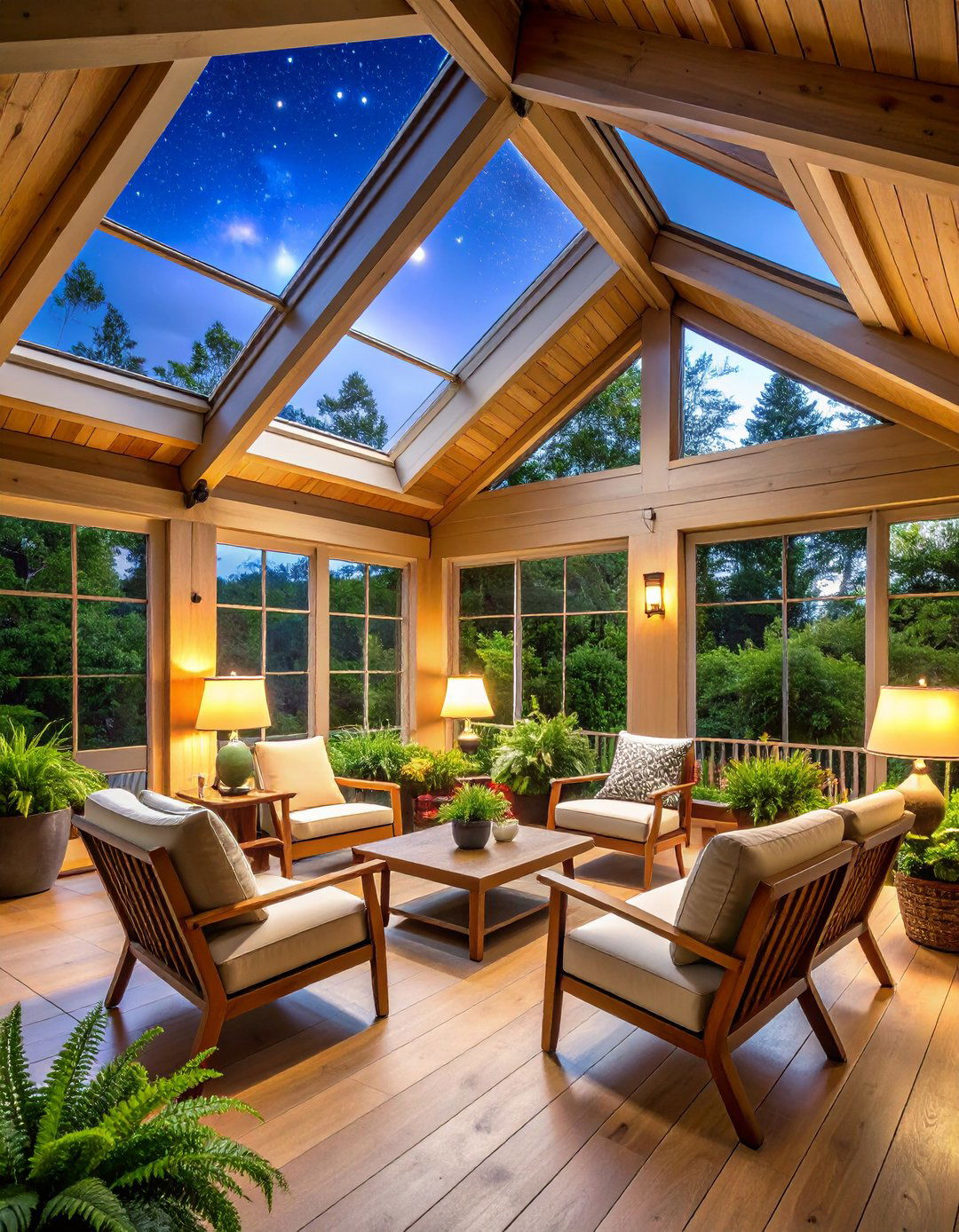
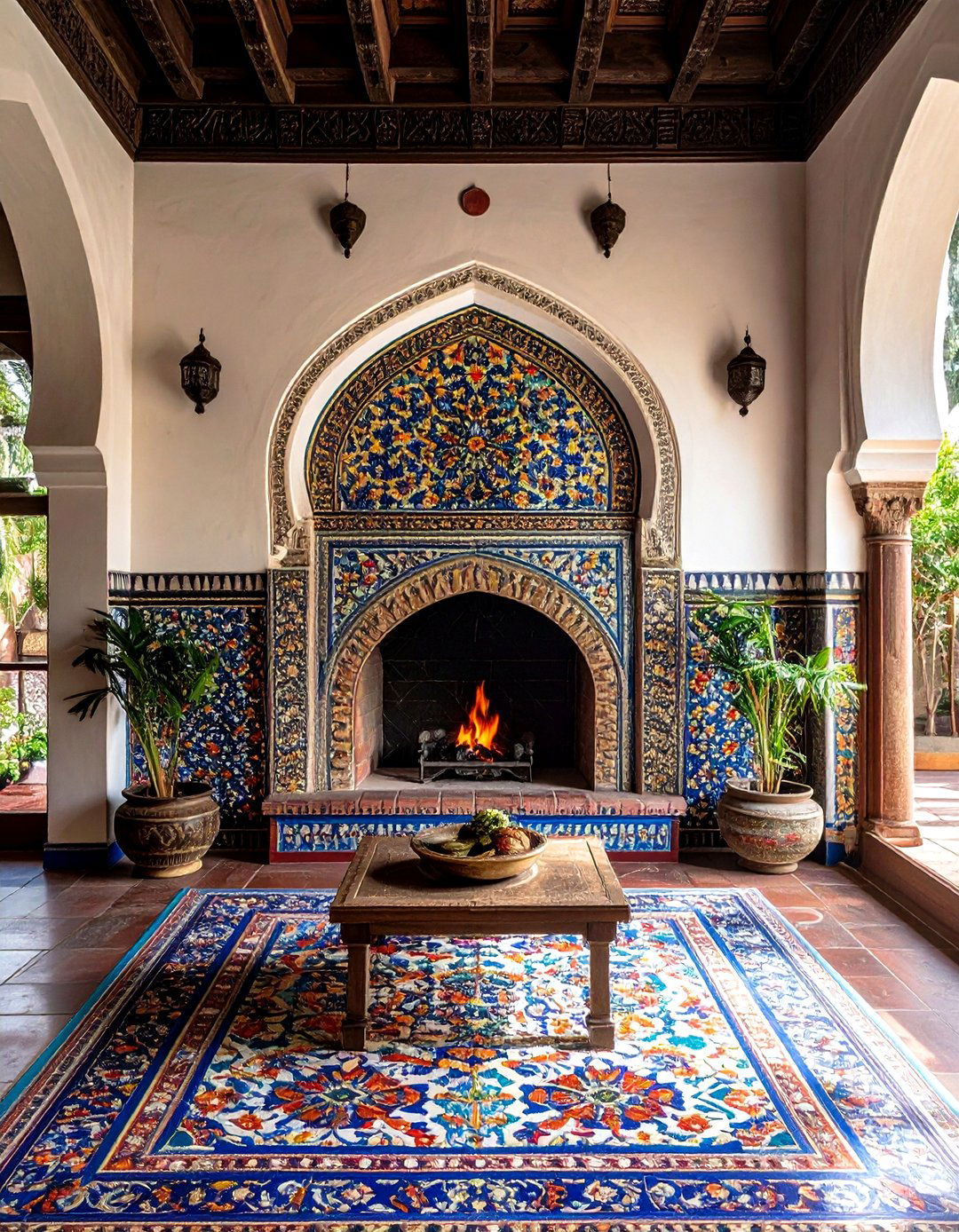
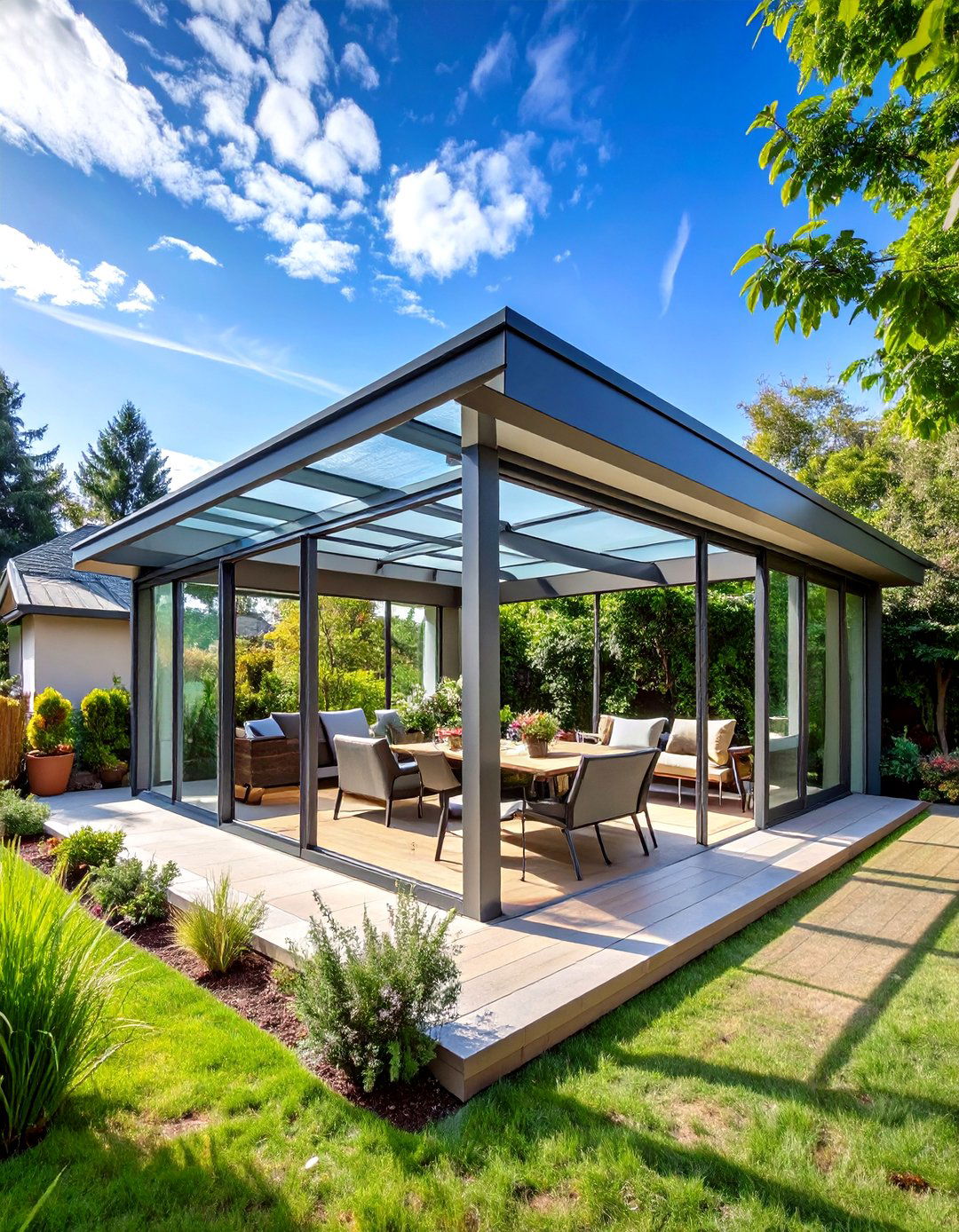
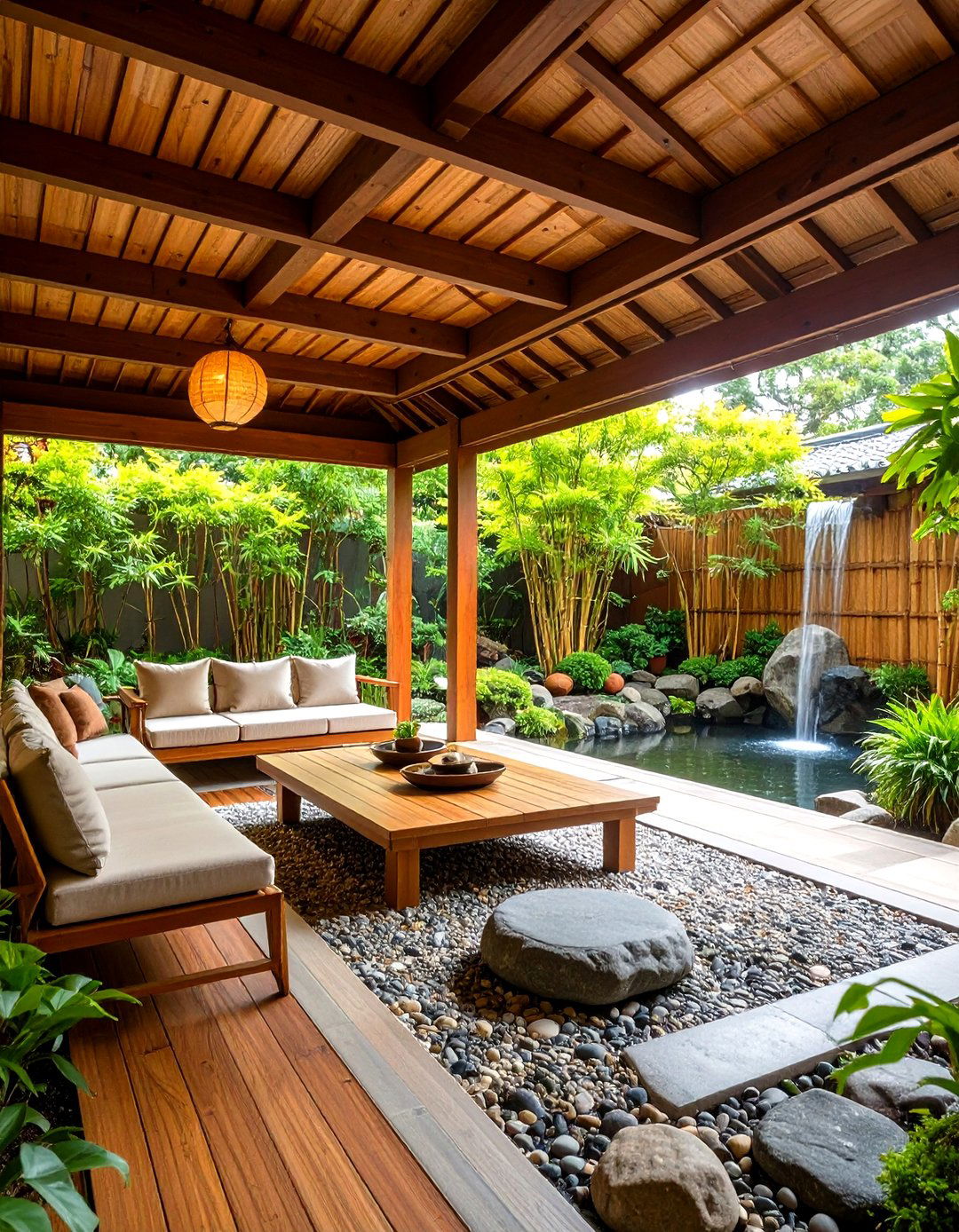
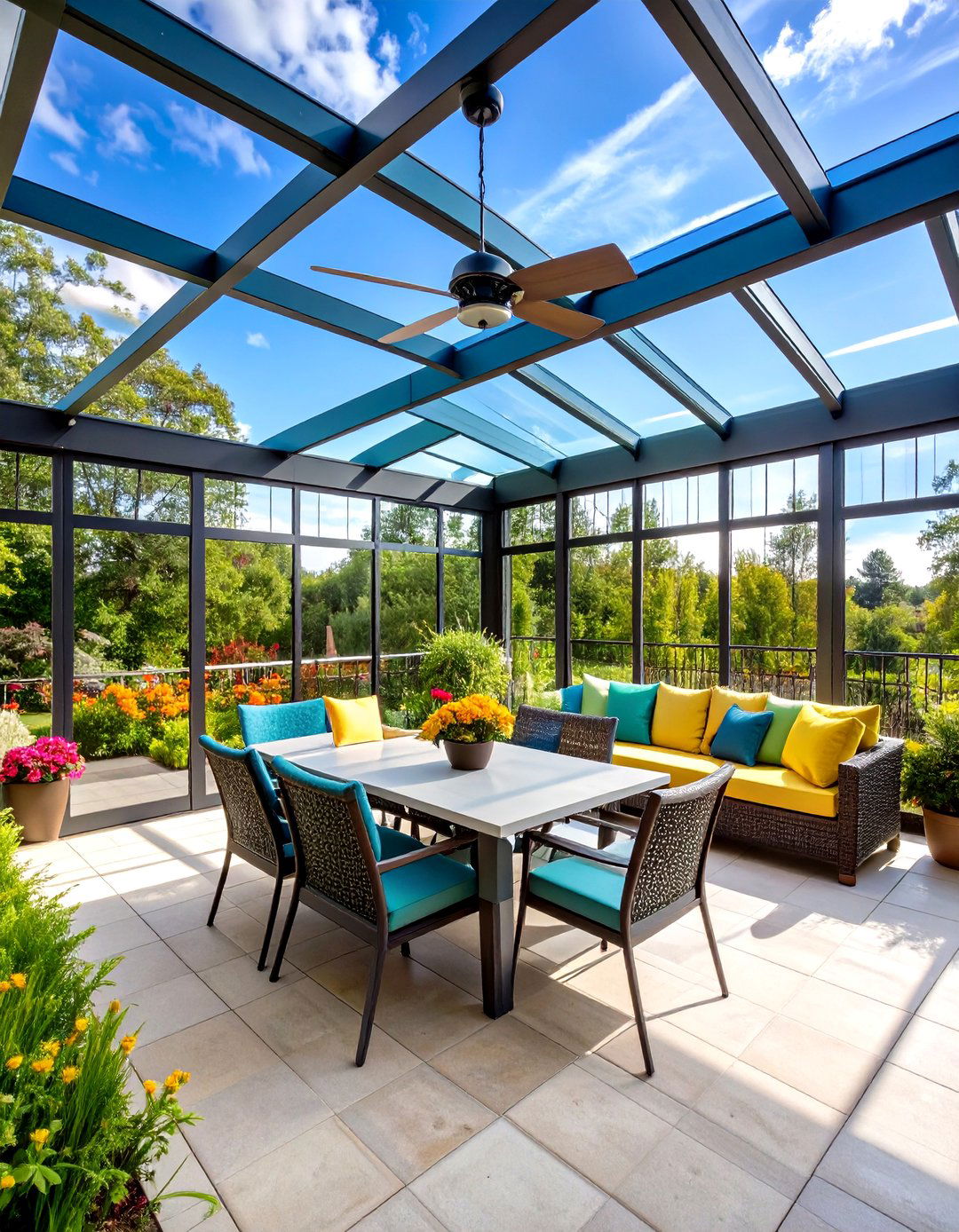
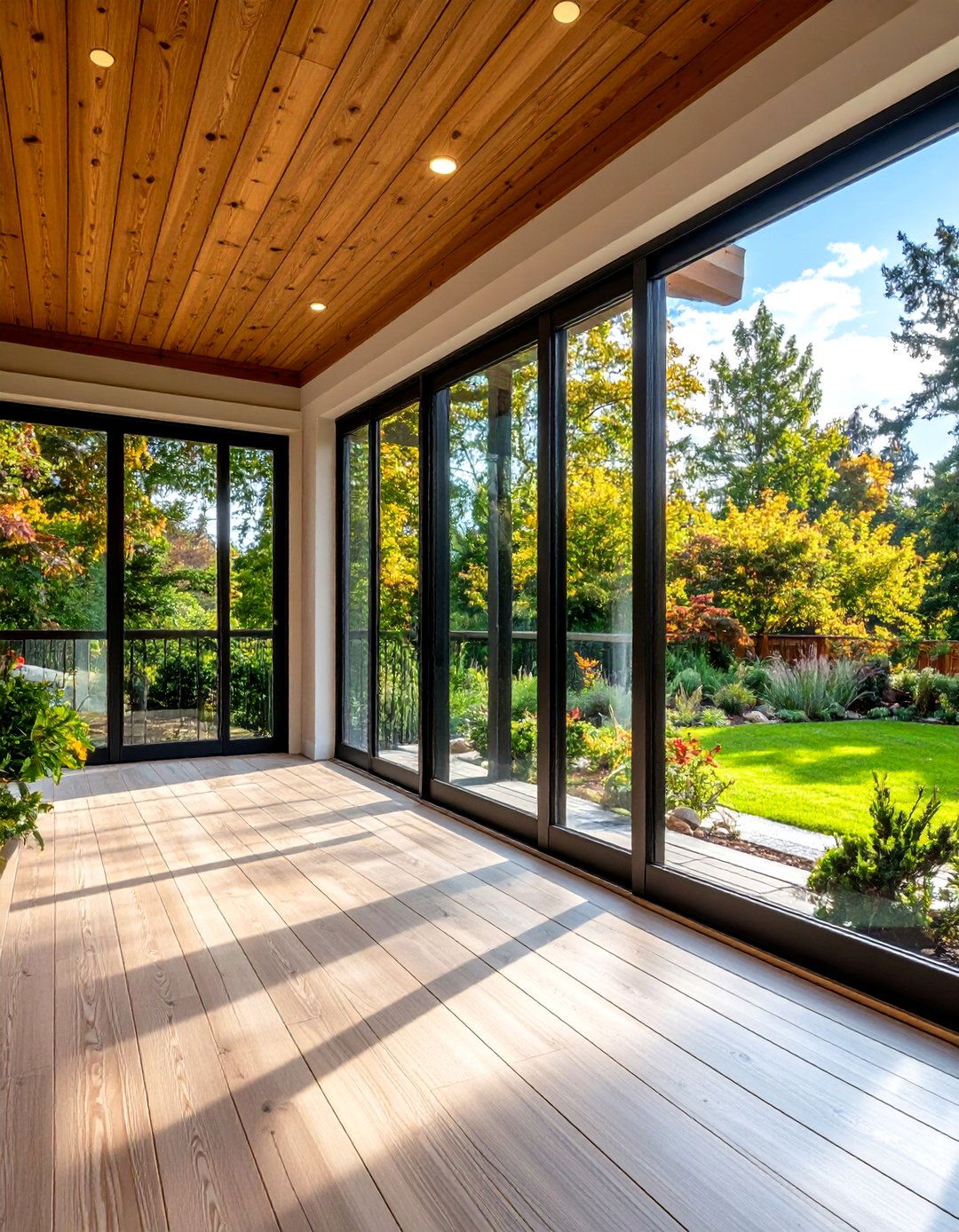
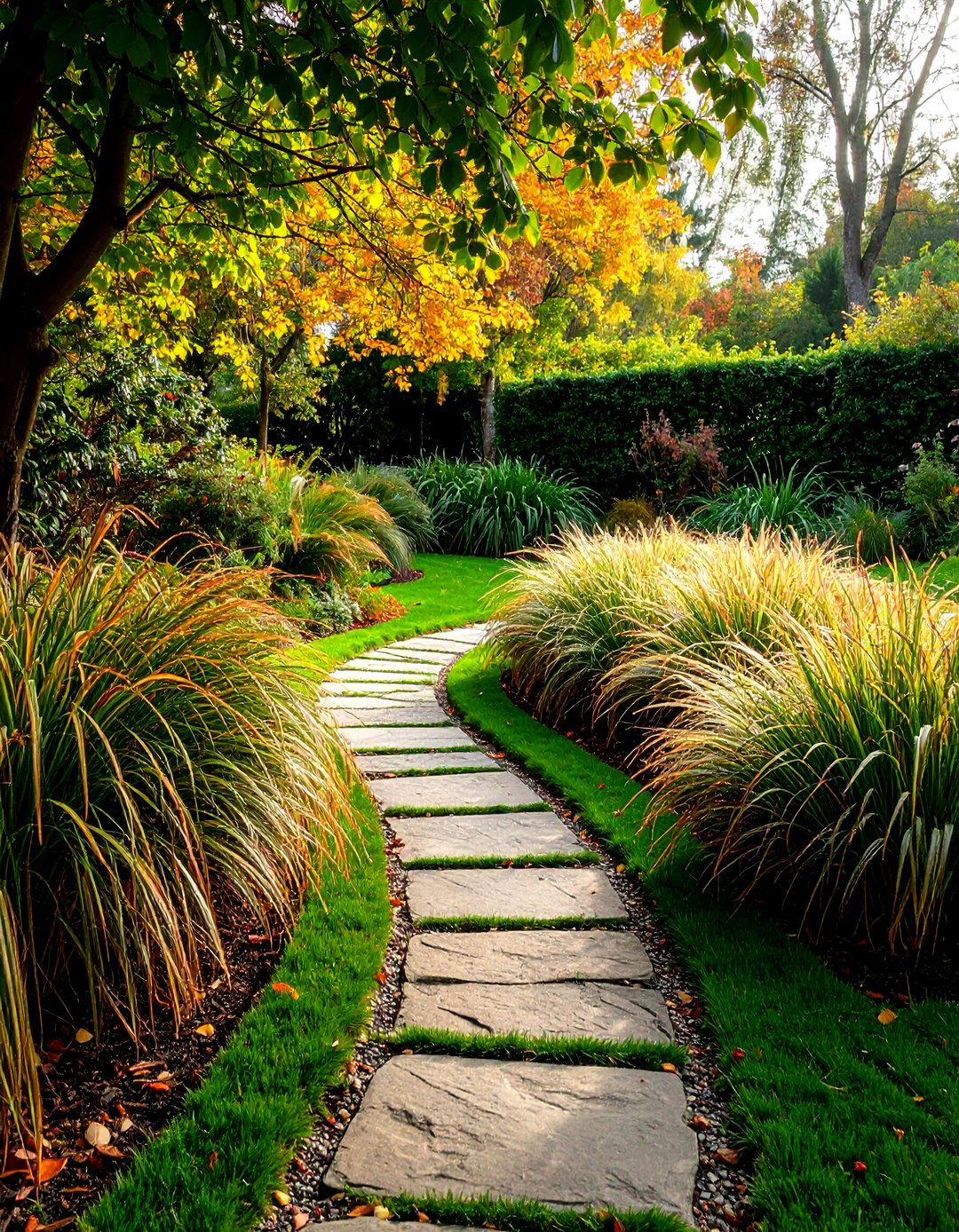
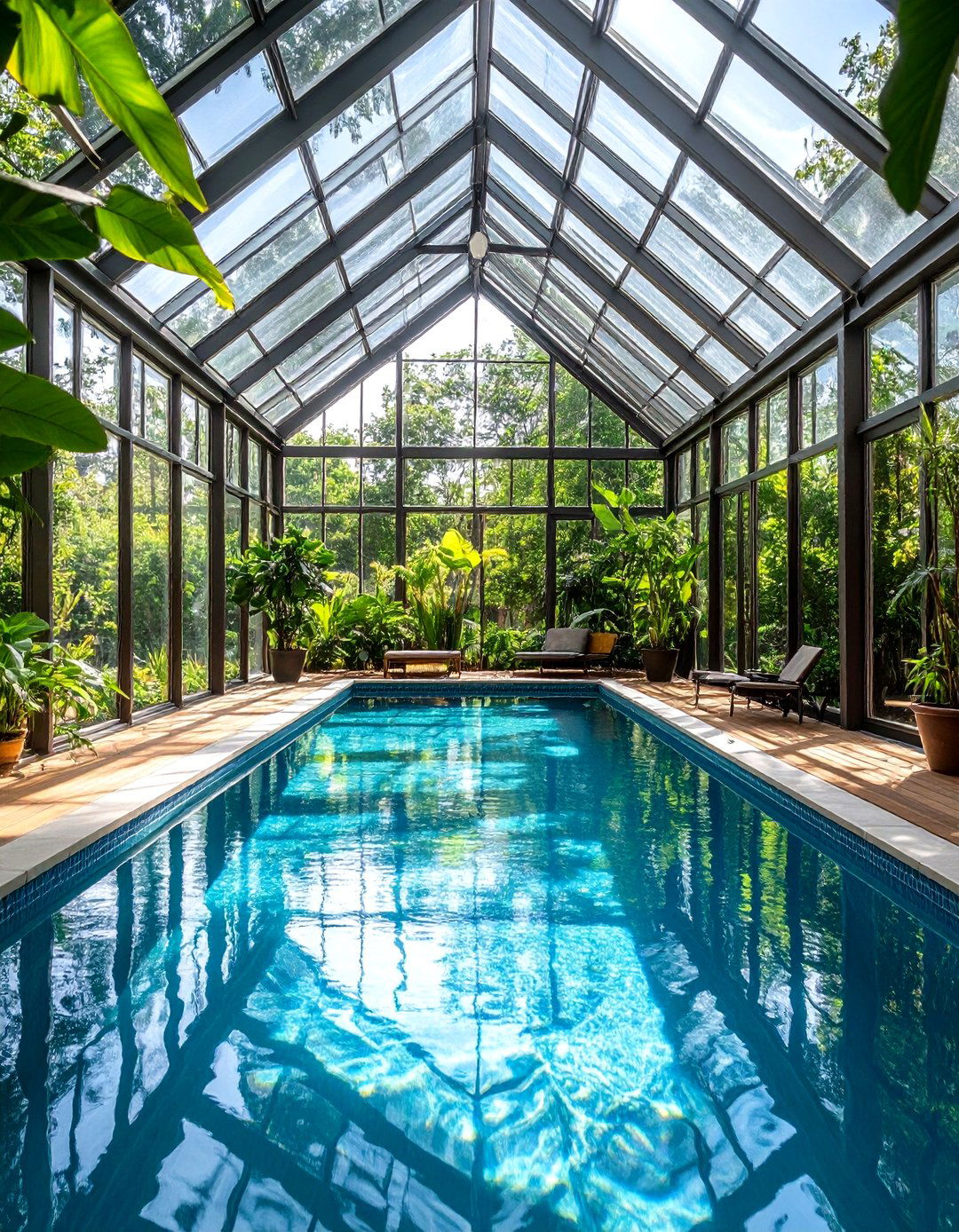

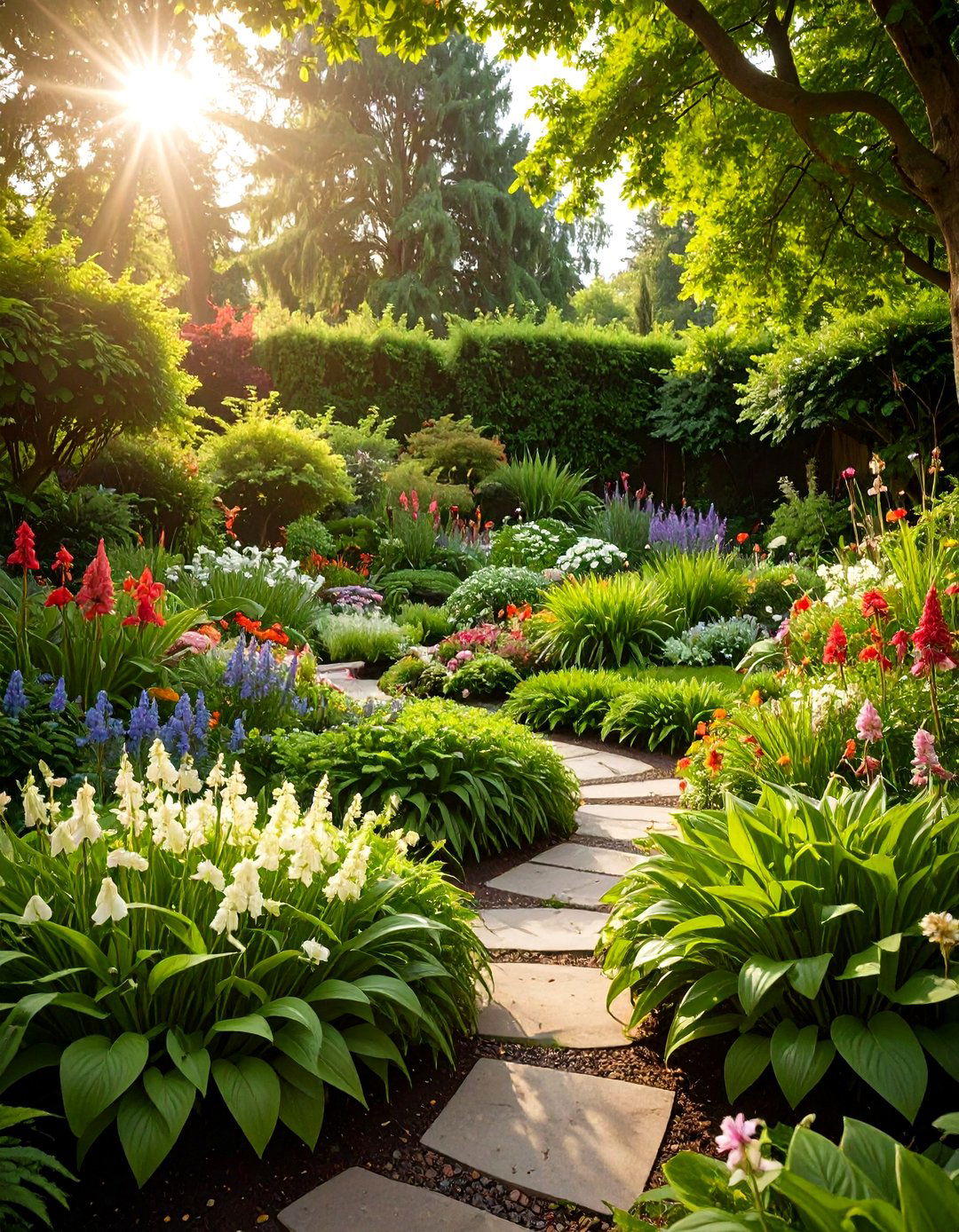

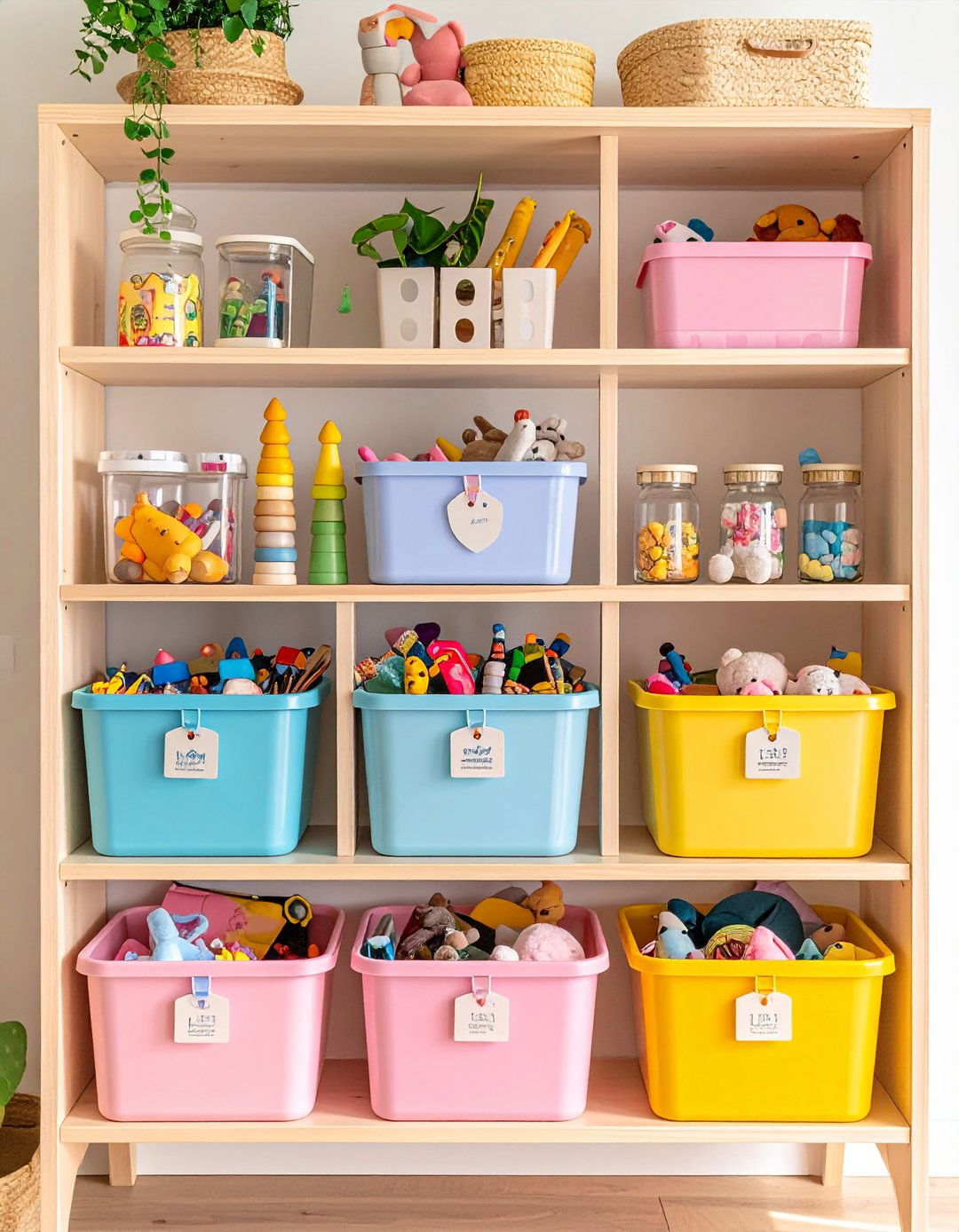
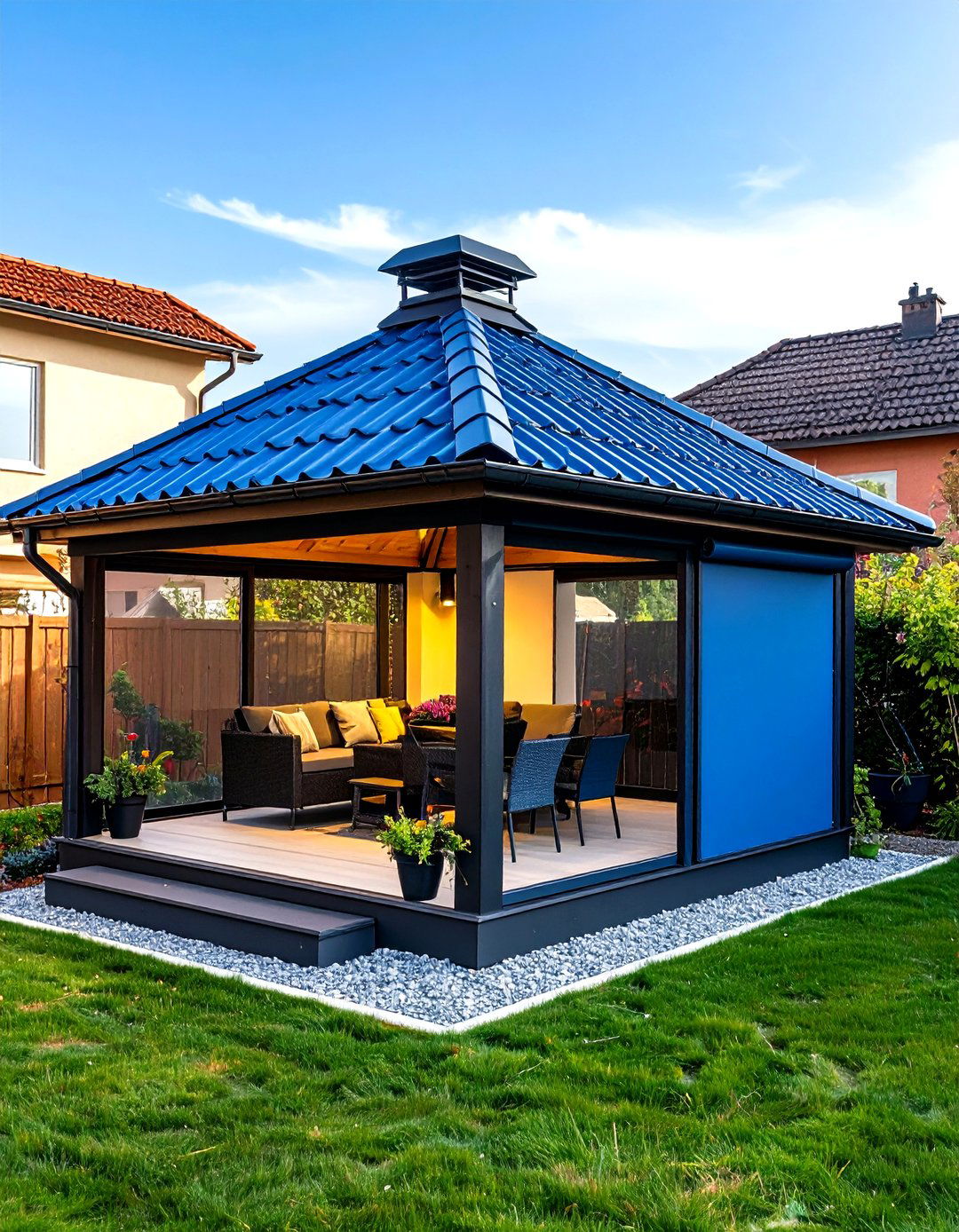
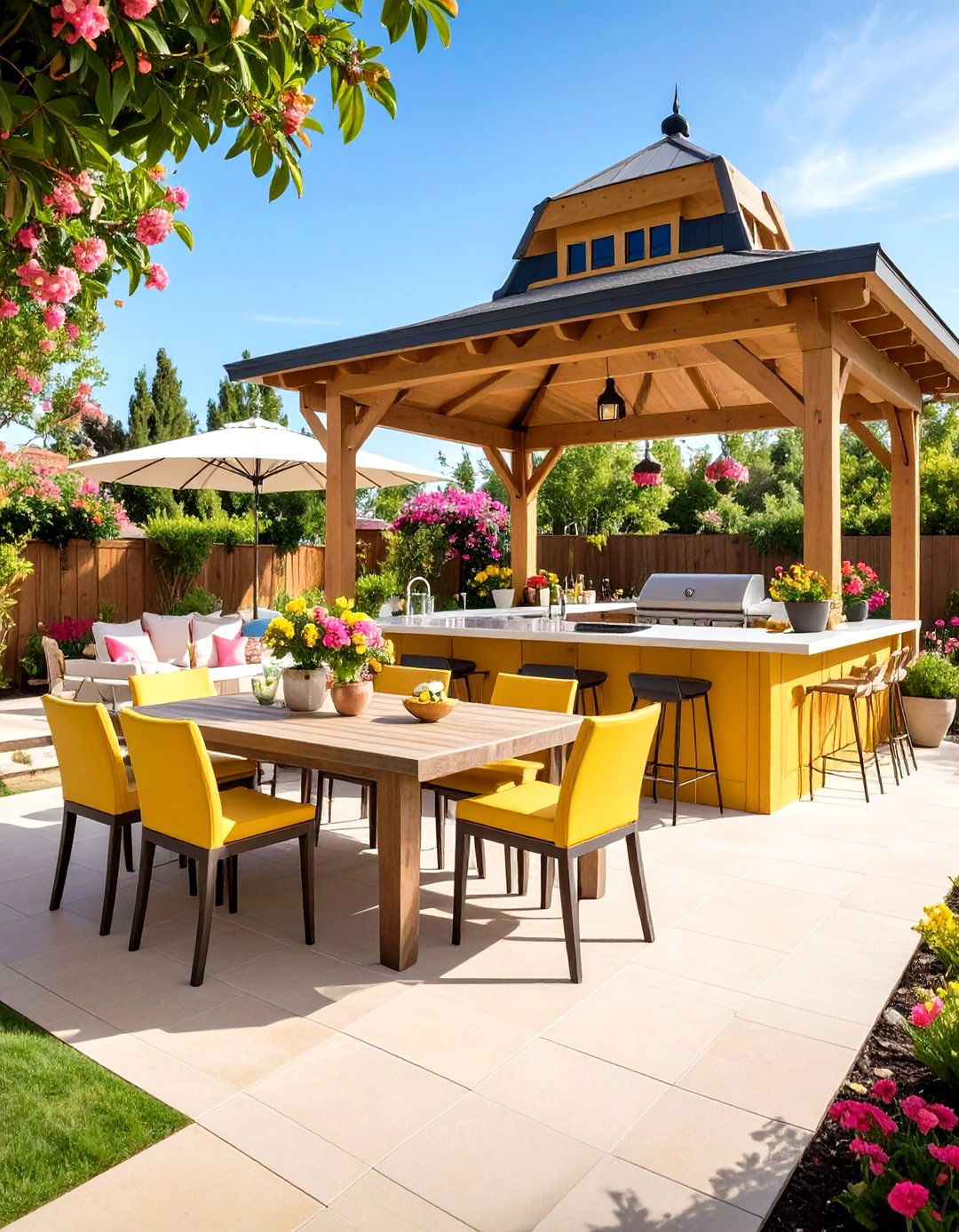
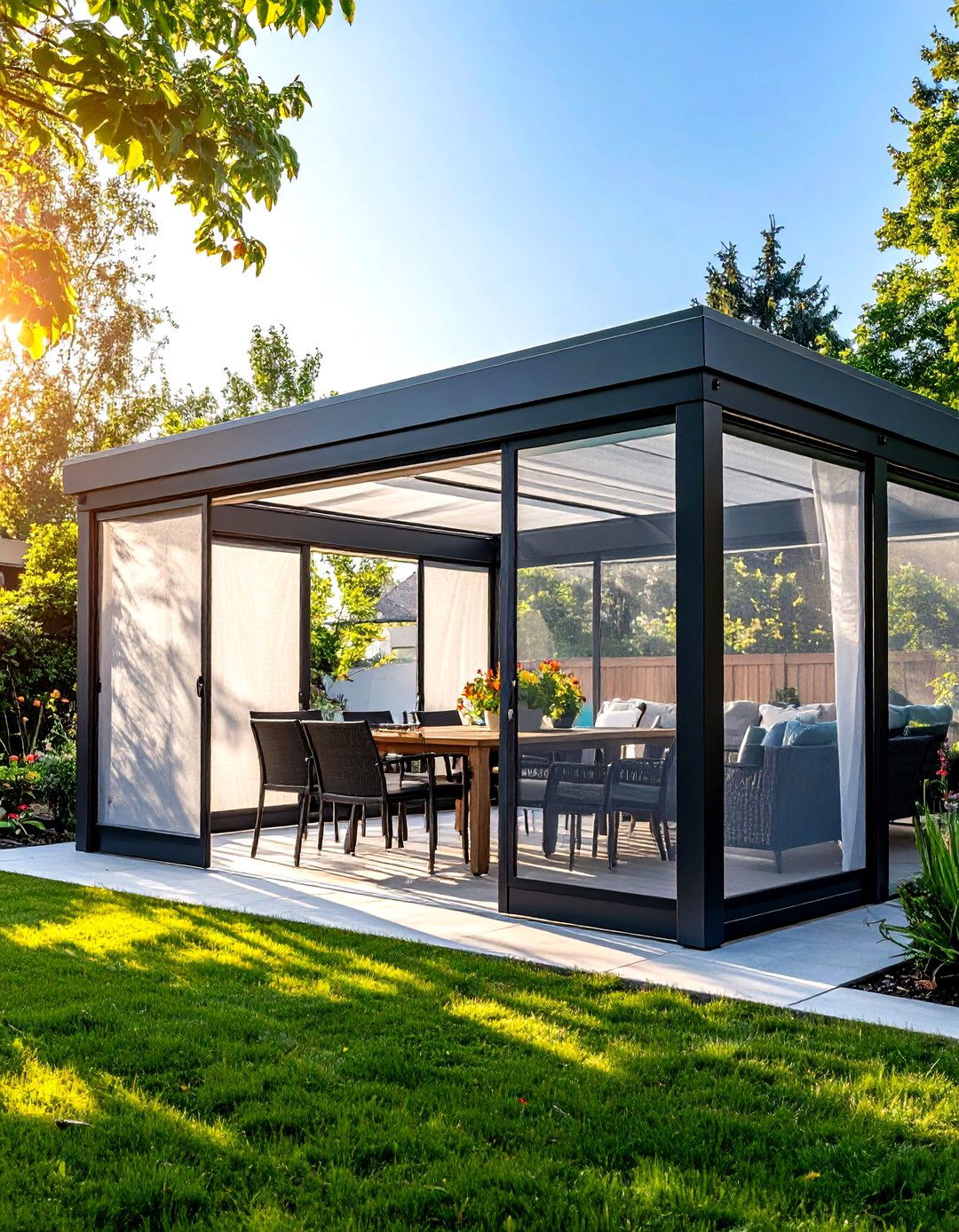
Leave a Reply